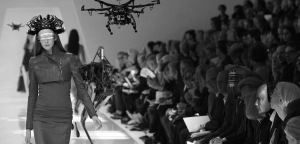 The world leaps forward in technology reminiscent of futuristic sci-fi films. The fashion world, made up of fabrics, cloths, colours, and threads is slowly accepting new technologies into its sector in unexpected ways. First and foremost, we can explore new documentation methods, such as the recent use of drones in fashion. An unmanned aerial vehicle, drones are smaller and quieter than a helicopter or light aircraft. They can therefore move much closer to their subject while still being able to record imagery from angles which people cannot, like aerial shots.
The world leaps forward in technology reminiscent of futuristic sci-fi films. The fashion world, made up of fabrics, cloths, colours, and threads is slowly accepting new technologies into its sector in unexpected ways. First and foremost, we can explore new documentation methods, such as the recent use of drones in fashion. An unmanned aerial vehicle, drones are smaller and quieter than a helicopter or light aircraft. They can therefore move much closer to their subject while still being able to record imagery from angles which people cannot, like aerial shots.
13 OCTOBER 2015
BY CAMILLA SAMPSON
THE RISE OF DRONES IN FASHION
NJAL ESSAY | MEET FASHION’S NEW FORM OF DOCUMENTATION
NJAL’s Camilla Sampson considers new technologies in the fashion industry and beyond, and in particular the rise of drones as a new method of documentation. Sampson charts its rise on fashion’s runways, and even profiles iconic French snowboarder Xavier De Le Rue, to discuss how drones are transforming the face of documenting extreme sports. As the worlds of fashion and technology become increasingly intertwined, how will the artistic fields embrace these new methods of documentation?
At the end of 2014, Montreal-based e-store SSENSE worked with Stella McCartney on their first “Drone Portraits” video. They created an “intimate fashion film,” using drones to capture the landscape from the air and highlighting their use in the project’s title. Their second “Drone Portraits,” this time with Hood By Air, equally portrayed a new way for drones to document new points of view for a fashion film. Aerial, spanning shots add a different atmospheric element to the films; going beyond the realms of human capability and allowing us to progress in the ways we capture a collection.
February saw Fendi collaborate with Unit9 to use drones to live stream their catwalk show, from all angles. The stream was unfortunately not of the highest quality, as images appeared blurred, but the attempt at least sitiched the fashion and the tech worlds together. Zoe Lazarus, a trend forecaster for Lowe & Partners, told the Guardian that this was “a bit of a coup for Fendi. Live streams have become quite standard now at fashion shows, so this is a way to up the ante and get social media coverage.”
 Beyond a drone’s capacity for a #hashtag frenzy, Lazarus thinks they will become increasingly canonised as new methods of documentation in creative fields, which is likely to include fashion. “Artists have been using drone-camera imagery for a while, and drones have been used in advertising and gaming for a couple of years,” she says. “Drones feel edgy and futuristic—they appeal to that vision of a cyborg future. Creatively, they are brilliant because they can be manoeuvred into places where people can’t. They are also small, easy to handle and inexpensive. We’re only going to see more of this in the future.”
Beyond a drone’s capacity for a #hashtag frenzy, Lazarus thinks they will become increasingly canonised as new methods of documentation in creative fields, which is likely to include fashion. “Artists have been using drone-camera imagery for a while, and drones have been used in advertising and gaming for a couple of years,” she says. “Drones feel edgy and futuristic—they appeal to that vision of a cyborg future. Creatively, they are brilliant because they can be manoeuvred into places where people can’t. They are also small, easy to handle and inexpensive. We’re only going to see more of this in the future.”
The mere fact that the wearable electronics market is valued in the multiple billions is a ready sign that the worlds of fashion and technology are becoming increasingly intertwined.
Just two months after Fendi’s show, the use of drones in fashion reprised itself at another Fashion Week, this time in Sydney. The Ten Pieces show, from Maurice Terzini, at Bondi’s Icebergs in Sydney, was recorded by Josh Brookes-Allen of Alphaflight Aero. A drone photography and film business, Alphaflight Aero had previously focused primarily on property and landscape. The collaboration came about so as to capture a striking setting, the iconic, drained Bondi Icebergs pool, in a totally unexpected way. Josh shares that it was the “low level aerial shots achievable by use of a drone,” that secured his involvement.
 In particular, a vantage point which was not achievable in the usual way – that from the ocean side looking back towards the scene and the audience. The use of a drone rather than a helicopter or light aircraft allowed the intimacy of the show to remain, while providing previously unattainable large aerial vistas. The aesthetics of the Ten Pieces collection, simple and modern, also seemed to be complemented by the drone’s presence. An aesthetic amalgamation of fashion and technology, alongside a collection underscored by material restriction is curious but effective.
In particular, a vantage point which was not achievable in the usual way – that from the ocean side looking back towards the scene and the audience. The use of a drone rather than a helicopter or light aircraft allowed the intimacy of the show to remain, while providing previously unattainable large aerial vistas. The aesthetics of the Ten Pieces collection, simple and modern, also seemed to be complemented by the drone’s presence. An aesthetic amalgamation of fashion and technology, alongside a collection underscored by material restriction is curious but effective.
This collaboration was certainly ground-breaking, quickly gaining attention in the days after the show. The videos were able to be released that same night, and Instagram was awash with aerial shots of the show made possible by the drone. A lot of the reviews also noted the drones role in the show, highlighting it as something original and exciting in the documentation of fashion. Josh explains that the flying of drones can at times be a challenge, throwing into question their durability for these types of projects. “We were very lucky on the day of the (Ten Pieces) show to have quite favourable weather conditions for flying…giving us some good lighting on the whole scene,” he shares. Had this not been the case the flight may have been harder, particularly in high winds, and the footage not as clear.
However, the effect of weather can be much the same for typical photography and outdoor events, and therefore is not an issue unique to the use of drones. The same can be said for space from the audience. Photographers’ flashes have often caused irritation, in the same way the noise or a sighting of a drone might. The specific reason for using drones in this case (filming from the water side), allowed a natural separation from the audience. The success of the drone’s documentation of the Ten Pieces show is evident, as Alphaflight Aero have since been called upon for other events and their footage has been spread over social media.
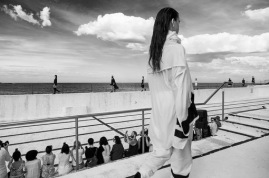 Josh sees a definite future for drones in the fashion world, but believes they have their place. “Outdoor shows and shoots are ideally suited for drone accompaniment, especially those in aesthetic and breath-taking locations,” he shares. It is about the whole atmosphere and location of a collection or shoot, not just the clothes themselves. It will likely be a while before they are fully suitable, and accepted, for many indoor environments. However, they were used indoors by tech giant Intel at September’s New York Fashion Week.
Josh sees a definite future for drones in the fashion world, but believes they have their place. “Outdoor shows and shoots are ideally suited for drone accompaniment, especially those in aesthetic and breath-taking locations,” he shares. It is about the whole atmosphere and location of a collection or shoot, not just the clothes themselves. It will likely be a while before they are fully suitable, and accepted, for many indoor environments. However, they were used indoors by tech giant Intel at September’s New York Fashion Week.
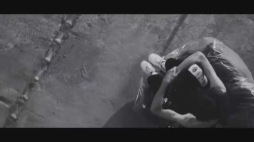 In fact, Intel was found at many of NYFW’s shows this season. They demonstrated that tech is finding its way into the fashion world, not just through drones or documentation. Chromat, in collaboration with Intel, showed a collection of garments which incorporated tiny pieces of Intel Curie hardware that respond to the wearer’s body. Sensors are able to measure the wearer’s body temperature, adrenaline, and stress levels. The garments then react, for example opening air vents to cool the body down, in the case of a bra,
In fact, Intel was found at many of NYFW’s shows this season. They demonstrated that tech is finding its way into the fashion world, not just through drones or documentation. Chromat, in collaboration with Intel, showed a collection of garments which incorporated tiny pieces of Intel Curie hardware that respond to the wearer’s body. Sensors are able to measure the wearer’s body temperature, adrenaline, and stress levels. The garments then react, for example opening air vents to cool the body down, in the case of a bra, 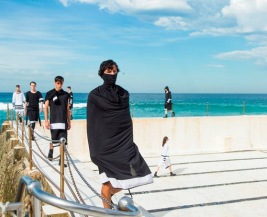 or transforming their 3D panels into different shapes. Adrenaline causes one dress to realise the “fight or flight” idea as a shape, expanding its framework around the wearer. The Curie hardware is yet to be approved for sale, but it is a clear example of the innovative results of a fusion of technology and fashion.
or transforming their 3D panels into different shapes. Adrenaline causes one dress to realise the “fight or flight” idea as a shape, expanding its framework around the wearer. The Curie hardware is yet to be approved for sale, but it is a clear example of the innovative results of a fusion of technology and fashion.
The dissemination of drones into the creative industries probably owes a lot to an unlikely source. There aren’t too many correlations between fashion and extreme sports but drones are a pretty pertinent link between the two. Xavier De Le Rue is a boardercross snowboard world champion from France, who has always with been hands on with capturing the insane footage and creative angles of his riding. Last year, the world’s gnarliest snowboarder developed HEXO+. It’s a self-flying camera that allows you to create the most amazing aerial footage, completely hands-free. De Le Rue says that, “building Hexo for an extreme sports market has meant that we’ve developed a system that deals well with the tough and diverse environments and that offers an incredible freedom.” Though fashion might not fall on the extreme sporting spectrum, it does create endless oppourtuntities for designers to visually communicate their collections in a new and exciting ways. “I think from this we will see the creative industries using drones as an accessible way to tell unique stories, now and in the future,” De Le Rue tells us.
 Drones might be a costly feat at the moment, but their inevitable digestion into the mainstream market could mean a lot more accessibility and adaptability when it comes to options for showcasinga. Right now, young designers have to shell out small fortunes in order to simply present their collections to an uadience and the spiralling cost of documenting their presentations and runway shows is an additional cost easily forgotten. In the context of extreme sports, De La Rue tells us that, “Drones now allow us to work with smaller crews, and its easier, faster, and invariably cheaper to realise ideas. Ideas that in the past may have required days of planning, large production budgets, helicopters and numerous cameraman can now be achieved with just one person, as many re-takes as you want until you are happy with the shots, or until you have all the angles that you require and you are still capturing outstanding footage of a very high quality.” While most young designers might not be looking to showcase their new collection at blistering mountain peaks, this affordable offering of flexibility means that the status-quo of fashion presentation can be shaken up with a hit of creativity.
Drones might be a costly feat at the moment, but their inevitable digestion into the mainstream market could mean a lot more accessibility and adaptability when it comes to options for showcasinga. Right now, young designers have to shell out small fortunes in order to simply present their collections to an uadience and the spiralling cost of documenting their presentations and runway shows is an additional cost easily forgotten. In the context of extreme sports, De La Rue tells us that, “Drones now allow us to work with smaller crews, and its easier, faster, and invariably cheaper to realise ideas. Ideas that in the past may have required days of planning, large production budgets, helicopters and numerous cameraman can now be achieved with just one person, as many re-takes as you want until you are happy with the shots, or until you have all the angles that you require and you are still capturing outstanding footage of a very high quality.” While most young designers might not be looking to showcase their new collection at blistering mountain peaks, this affordable offering of flexibility means that the status-quo of fashion presentation can be shaken up with a hit of creativity.
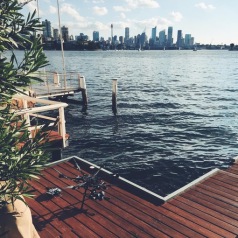 This fusion is at times met with opposition as people struggle to accept new technologies they are unsure of. A sentiment acknowledged by Josh Brookes-Allen of Alphaflight Aero. He shares, “one of the biggest hurdles with an industry adopting a technology or different way of documentation is knowledge of that tech and the vision of how it can increase the value of the production”. However he does believe that, “thanks to this Ten Pieces show, a big step has been taken towards educating the fashion industry to the advantages of drone photography and filming”. There is still a long way to go before these technologies are deemed fully suitable, or accepted, within the fashion world. It would seem at least however, that 2015 has been the year that the start of a pioneering….
This fusion is at times met with opposition as people struggle to accept new technologies they are unsure of. A sentiment acknowledged by Josh Brookes-Allen of Alphaflight Aero. He shares, “one of the biggest hurdles with an industry adopting a technology or different way of documentation is knowledge of that tech and the vision of how it can increase the value of the production”. However he does believe that, “thanks to this Ten Pieces show, a big step has been taken towards educating the fashion industry to the advantages of drone photography and filming”. There is still a long way to go before these technologies are deemed fully suitable, or accepted, within the fashion world. It would seem at least however, that 2015 has been the year that the start of a pioneering….
___________________________________________
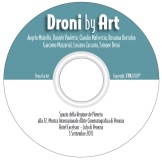 Droni by Art, the first italian group used the drones in the Biennale of Venice and in the meetings like “The Pocket Journalism / Le Journalisme de Poche / Il Giornalismo Tascabile”, “Le Interviste Volanti” / “The Interviews Flying”. A Drone IPSIA is a little robot with a small computer in a project Lab-makers IPSIA, directed by prof. Daniele Pauletto with the collaboration of PH-Dr. Angelo Miatello, cultural journalist (Droni by Art).
Droni by Art, the first italian group used the drones in the Biennale of Venice and in the meetings like “The Pocket Journalism / Le Journalisme de Poche / Il Giornalismo Tascabile”, “Le Interviste Volanti” / “The Interviews Flying”. A Drone IPSIA is a little robot with a small computer in a project Lab-makers IPSIA, directed by prof. Daniele Pauletto with the collaboration of PH-Dr. Angelo Miatello, cultural journalist (Droni by Art).
See others services in this website about “Droni by Art”.
IPSIA: Istituto Professionale Statale Industria Artigianato
 Young Students IPSIA
Young Students IPSIA
Prof. Daniele Pauletto, docente di tecnologie digitali
Ph-Dr Angelo Miatello, Geneva University (1986), caporedattore
Verty Important: DroniFestival in Spring 2016
Info E-mail: edizioniaida@gmail.com